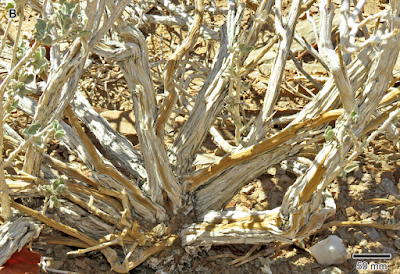Petal-bushes, Petalidium spp., are woody perinal shrubs in the Family Acanthaceae found in arid sandy or stoney areas of Africa, India, and the Mascarene Islands, although most species are found in areas of Southern Africa with summer rainfall and no frosts. There are currently 32 species recognised from Namibia, 13 from Angola, and six from South Africa. Despite the name 'bush', they are diverse in form, ranging from scrambling herbs to large, robust shrubs. Many species of Petalidium are fast-growing and produce attractive flowers, leading to some species being cultivated by gardeners.
In a paper published in the journal Phytotaxa on 8 January 2025, Wessel Swanepoel of the H.G.W.J. Schweickerdt Herbarium at the University of Pretoria, and Abraham Van Wyk, also of the H.G.W.J. Schweickerdt Herbarium at the University of Pretoria, and of the South African National Biodiversity Institute, describe a new species of Petalidium from the Kaokoveld region of northwestern Namibia.
During a visit to the Okandjombo area of the Kaokoveld in November 2023, Wessel Swanepoel obseeved a number of distinctive Petalidium Plants, with a dwarf-shrubby habit, pealing white bark, and multiple stems arrising from just below the ground level. At this time the Plant was not in flower, making it difficult to confirm that it was not a previously described species, however, during a follow-up visit in May 2024, the plants were found to be producing distinctive pink flowers, confirming it as a new species. This is named Petalidium hoarusibense, in reference to the Hoarusib River, as it was discovered within the catchment of this river.
To date, Petalidium hoarusibense, has only been found in m the mountainous area along the Hoarusib River and its tributaries to the east and south of Okandjombo, part of the Great Escarpment of northwestern Namibia, on on arid hillsides and along drainage lines at elevations of between 450 and 700 m above sealevel. This area recieves about 100 mm of rainfall in an average year, and additionally has about five foggy days, which might contribute to the available moisture slightly..
All known specimens of Petalidium hoarusibense were found growing within an area of about 20 x 18 km, although within this area there were several areas where it was quite common. There were also a large number of dead Plants on the hillsides, possibly due to a prolonged drought in the area. For this reason, Swanepoel and Van Wyk reccomend that the species be listed as Vulnerable under the terms of the International Union for the Conservation of Nature's Red List of Threatened Species.
See also...











